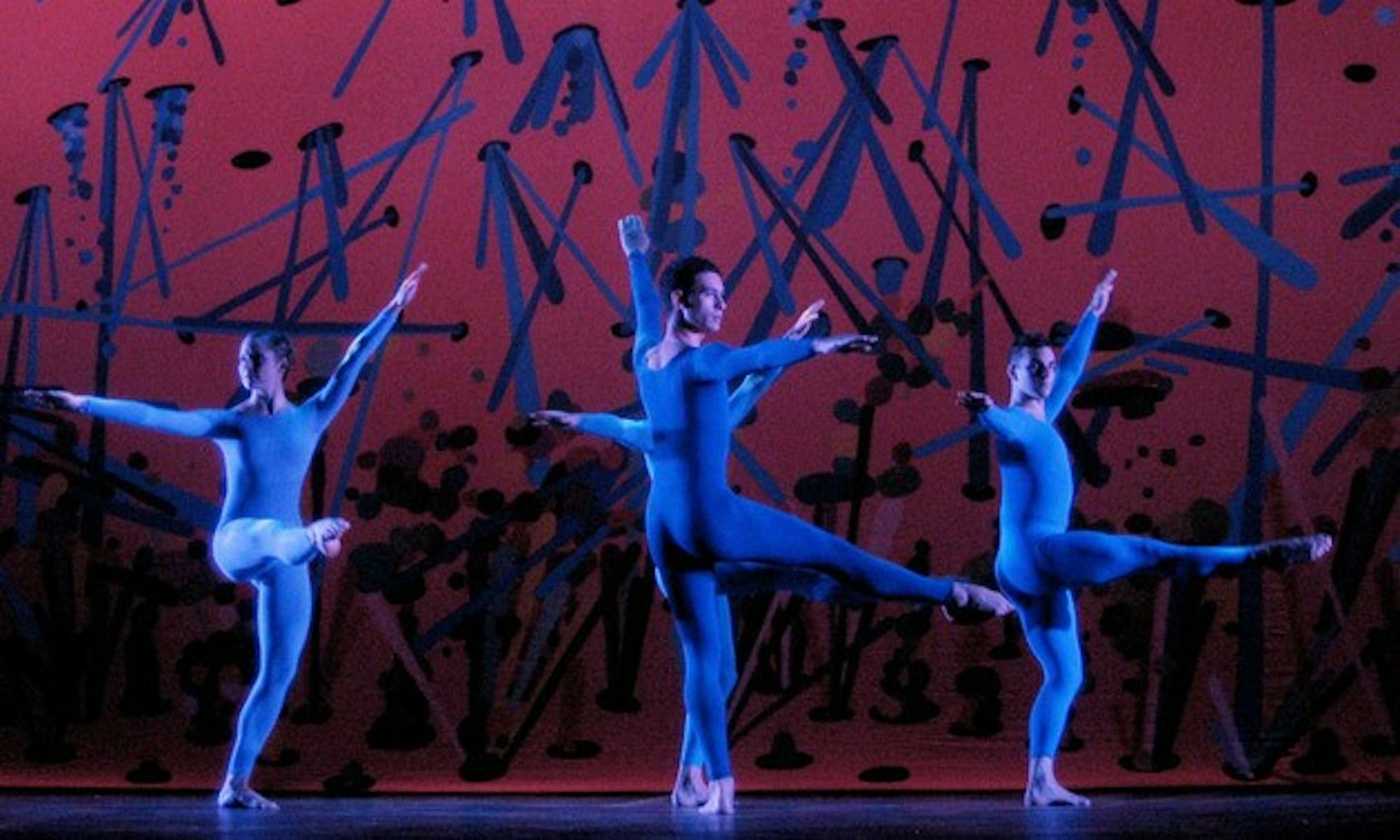After about 45 minutes of watching dancers stretch their arms in unforgiving, solid-colored Rauschenberg encasements, their suddenly sleeveless bodysuits seemed scandalously new. This ability to magnify subtle change into shocking event is the magic of the Merce Cunningham Dance Company (MCDC). With astonishing technical control and gorgeous angular grace, the dancers forge drama from the raising of a heel, the opening of a hip, the novel baring of a bicep.
In each of Saturday night's three works, the dancers' creation of intimate space and demonstration of total bodily control, the intensely exposed quality of their performance and the dynamic push/pull of their spatial relationships was astounding.
But unfortunately in "XOVER," the jarring, if musical, discord of John Cage's "Aria" and "Fontana Mix" proved completely distracting. Aside from the piece's opening seconds and its handful of brief, euphoric moments of silence, I found myself concentrating wholly on drowning out the intermittent nose-blowing of the (surprisingly chic) live accompanist and missing the dancers' onstage harmony.
It seems I wasn't alone in my discomfort, as the unsuppressed, uncomfortable laughter of the audience occasionally rippled through the theater. Perhaps they were wondering, as I was, how the dancers could maintain their intense focus and precise internal rhythm with a spot-lit Gollum growling into what sounded like a malfunctioning microphone.
I suppose, as the adage goes, practice makes perfect -- Merce Cunningham famously creates each dance without any musical accompaniment and later commissions or selects a musical work to be played simultaneously. Members of MCDC must be experts at drowning out external phenomena. Or wear undetectable ear plugs.
The concept of dance as an art form separate from music has been part of Cunningham's work from the beginning, and was remarkably updated in "EyeSpace," a 2006 work performed immediately before "XOVER." For this piece, each audience member was provided with an iPod shuffle, loaded with a selection of wild music from Mikel Rouse's "International Cloud Atlas." Instructed to push the control all the way down to the "shuffle" setting, everyone then pushed play at once, and watched/ listened to her own personal experience unfold. Didn't like the particular combination? Next.
This experimental, chance-oriented approach to dance performance is entirely in keeping with Cunnigham's general oeuvre and served to highlight the best elements of his approach. As the music shifted from one track to the next, I watched the decor shift along with it: The spiky, colorful shoots of color becoming blades of grass, candles, rays of light; the dancers first frantic then calm, together and alone.
They were, of course, performing without hearing my music (at one point a brilliantly bizarre repetition of "But I didn't lose my fork") a truth that seemed, depending on the sounds emerging from my headphones, impossible or obvious.
"EyeSpace" forces a questioning of the connection between sight and sound: Does our brain automatically, incorrectly synthesize our senses? Is sensory cohesion an illusion?
"EyeSpace" provided an intoxicating power trip for the button-happy among the audience, or an exercise in purist discipline for those trying to leave their experience to the technological gods of chance. Either way, once you've had control, as I learned when my newly iPodless self watched and listened to "XOVER" unfold, you notice when you've lost it.
Control or no control, however, there is little more mind-bendingly incredible than watching an MCDC member meld one impossibly controlled contortion into another. Holley Farmer, inching her way into a split in the beginning stages of "Crises" (the first work performed on Saturday), or Andrea Webber holding a single leg aloft, unmoving before finally rotating to place it precisely behind her. Each dancer's movements mesmerized individually and worked together, creating in all three pieces an almost pixelated panorama of colorful, organic formulations.
Also fascinating, and a little surprising, was that the drastic diversity of music -- the tumbling piano keys of "Crises," the techo-murmurings of "EyeSpace" and Cage's vocal screeching in "XOVER" -- didn't change the look of the dancing. The emotional content perhaps was different, but musical variation didn't dull the stunning effect of MCDC's characteristic unsupported adagio (movements balancing on one leg, purportedly the hardest action a dancer ever has to perform).
In each piece on Saturday, regardless of context, the dancers coerced intimacy and dynamism from the moments of chance Cunningham's choreography so famously provides.




